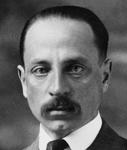Biography

On December 4, 1875, Rainer Maria Rilke was born in Prague, the only child of an unhappy marriage. Rilke's childhood was also unhappy; his parents placed him in military school with the desire that he become an officer—a position Rilke was not inclined to hold. With the help of his uncle, who realized that Rilke was a highly gifted child, Rilke left the military academy and entered a German preparatory school. By the time he enrolled in Charles University in Prague in 1895, he knew that he would pursue a literary career: he had already published his first volume of poetry, Leben und Lieder, the previous year. At the turn of 1895-96, Rilke published his second collection, Larenopfer (Sacrifice to the Lares). A third collection, Traumgekrönt (Dream-Crowned) followed in 1896. That same year, Rilke decided to leave the university for Munich, Germany, and later made his first trip to Italy.
In 1897, Rilke went to Russia, a trip that would prove to be a milestone in Rilke's life, and which marked the true beginning of his early serious works. While there the young poet met Tolstoy, whose influence is seen in Das Buch vom lieben Gott und anderes (Stories of God), and Leonid Pasternak, the nine-year-old Boris's father. At Worpswede, where Rilke lived for a time, he met and married Clara Westhoff, who had been a pupil of Rodin. In 1902 he became the friend, and for a time the secretary, of Rodin, and it was during his twelve-year Paris residence that Rilke enjoyed his greatest poetic activity. His first great work, Das Stunden Buch (The Book of Hours), appeared in 1906, followed in 1907 by Neue Gedichte (New Poems) and Die Aufzeichnungen des Malte Laurids Brigge (The Notebooks of Malte Laurids Brigge). Rilke would continue to travel throughout his lifetime; to Italy, Spain and Egypt among many other places, but Paris would serve as the geographic center of his life, where he first began to develop a new style of lyrical poetry, influenced by the visual arts.
When World War I broke out, Rilke was obliged to leave France and during the war he lived in Munich. In 1919, he went to Switzerland where he spent the last years of his life. It was here that he wrote his last two works, the Duino Elegies (1923) and the Sonnets to Orpheus (1923). He died of leukemia on December 29, 1926. At the time of his death his work was intensely admired by many leading European artists, but was almost unknown to the general reading public. His reputation has grown steadily since his death, and he has come to be universally regarded as a master of verse.
Das Buch der Bilder (The Book of Images) (1902)
Das Stunden Buch (Book of Hours) (1905)
Neue Gedichte (New Poems) (1907)
Requiem (1909)
Das Marienleben (The Life of the Virgin Mary) (1913)
Die Sonette an Orpheus (Sonnets to Orpheus) (1923)
Duineser Elegen (Duino Elegies) (1923)
Späte Gedichte (Later Poems) (1934)
Poemes Francais (French Poems) (1935)
Rilke on Love and Other Difficulties (1975)
Selected Poems of Rainer Maria Rilke (1981)
New Poems (1984)
Rainer Maria Rilke: Selected Poems (1985)
The Complete French Poems of Rainer Maria Rilke (1996)
Last updated August 31, 2011



